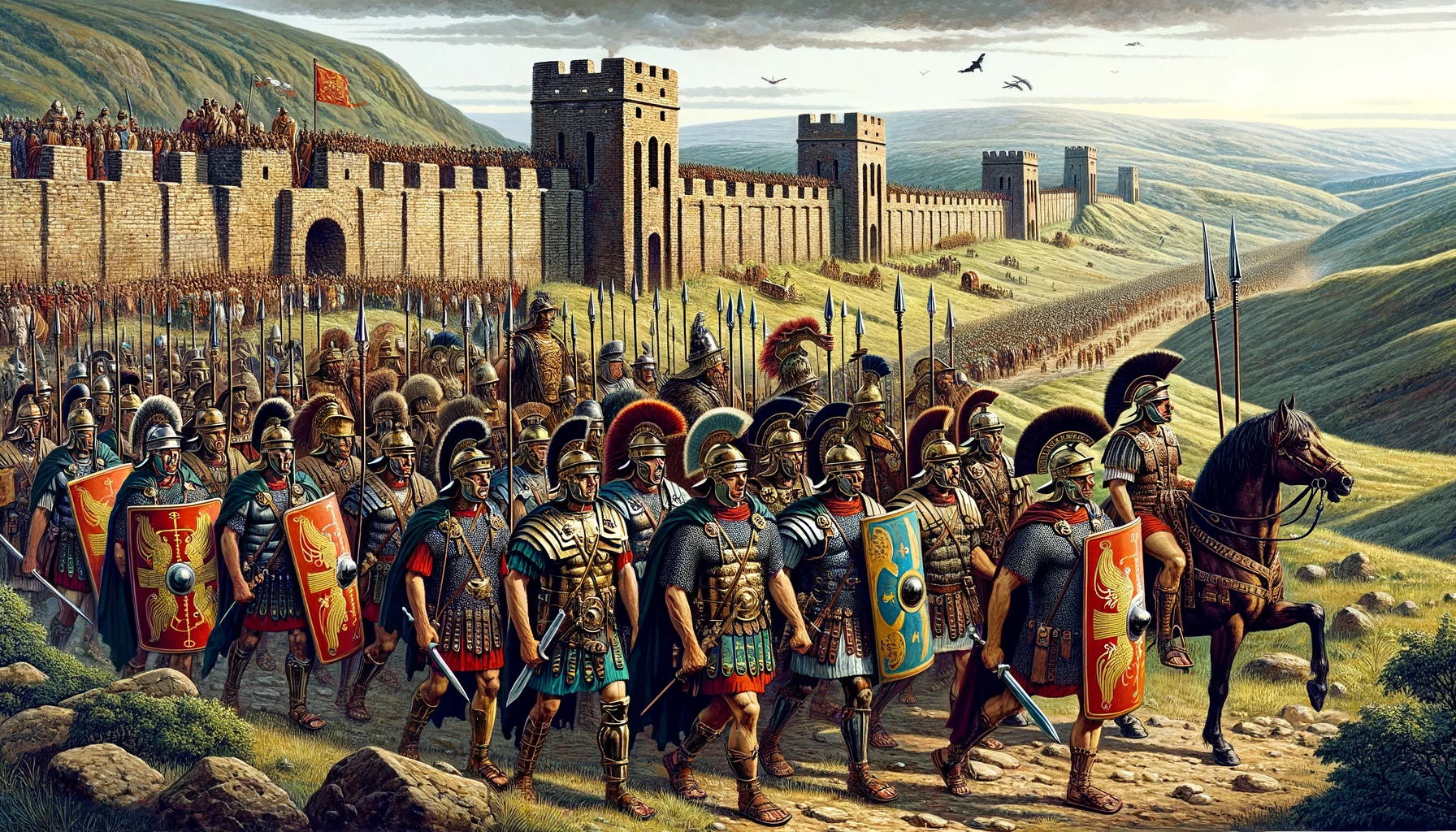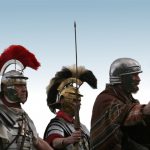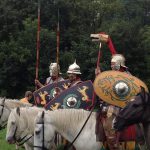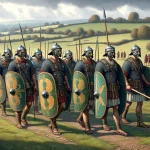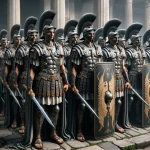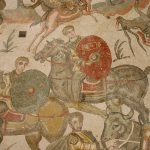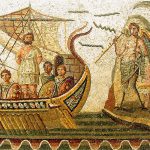From the moment the Roman legions set foot upon the shores of Britain in 43 AD, under the command of Emperor Claudius, the landscape of this wild and diverse island was forever altered. Over the centuries, as the Roman Empire sought to cement its presence in this far-flung province, a variety of military units were deployed to maintain order, establish dominance, and secure the frontiers of what the Romans called ‘Britannia’. These units, drawn from the vast reaches of the empire, were not just mere soldiers; they were bearers of Roman culture, engineering, and traditions. Who were these soldiers and where did they come from?
The Roman military presence in Britain was composed of both auxiliary units, recruited from non-citizen peoples, and the famed legions, the backbone of the Roman army, whose citizen-soldiers were the custodians of Roman military prowess. The strategic distribution of these forces across Britain tells a story of military adaptability and the empire’s expansive logistical network.
Cohors Praetoriae – The Praetorian Cohorts: These were elite units serving as the personal bodyguards and functionaries of the Roman emperors. Originating from the trusted cohorts of the Roman generals, they evolved into a powerful force in Roman politics. Although primarily based in Rome or wherever the emperor resided, their influence and occasional deployments could reach provinces like Britain, especially during significant events or the visit of an emperor.
Legionis Britanniarum – The Roman Citizen Legions of Britain: The backbone of the Roman army, these legions were composed of Roman citizens. They were the primary military force stationed in the province, tasked with conquest, construction, and maintaining Roman control over Britain. These legions built and manned the major fortifications, roads, and administrative centres.
Cohortes Britanniarum – The Auxiliary Infantry Cohorts of Britain: These were non-citizen troops recruited from the local population or other parts of the empire, providing additional manpower to the legions. They were organized into cohorts and stationed throughout Britain to support the legions, performing various roles from frontier defence to public order.
Alae Britanniarum – The Auxiliary Cavalry Wings of Britain: These were auxiliary units made up of cavalry forces. Often recruited from the provinces, including Britain itself, they supported the legions by providing mobility, speed, and the capacity for rapid deployment. Their roles included scouting, flanking enemy forces, and chasing down retreating enemies.
Catervae Britanniarum – The Irregular Auxiliary Units of Britain: These were non-standardized units that did not fit into the regular auxiliary or legionary structures. They likely consisted of locally recruited forces, using their knowledge of the terrain and guerrilla tactics to their advantage. They may have been used for specific tasks where traditional Roman military tactics were less effective.
Numeri Exploratorum – The Companies of Scouts: These units consisted of specialized reconnaissance troops. They were typically smaller, more mobile groups tasked with gathering intelligence, conducting surveillance on enemy movements, and engaging in skirmishes. In the challenging terrains of Britain, their knowledge of the local environment would have been crucial for Roman military operations.
Classis Britannica – The British Fleet: This was the provincial fleet of the Roman navy that operated in the waters around Britain and the English Channel. Their roles included controlling sea routes, preventing piracy, and providing transportation and supplies for the army. They were also responsible for the movement of troops across rivers and engaging in naval conflicts when necessary.
